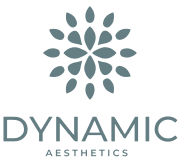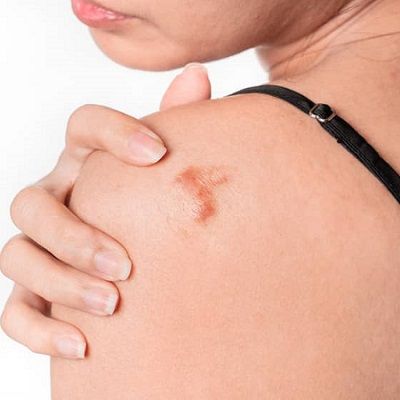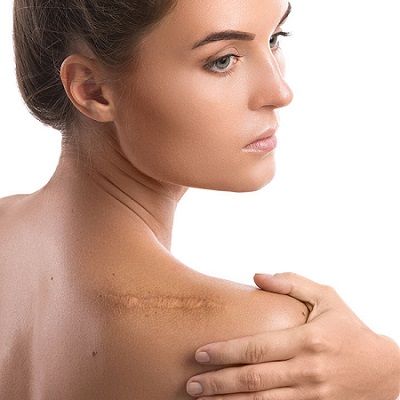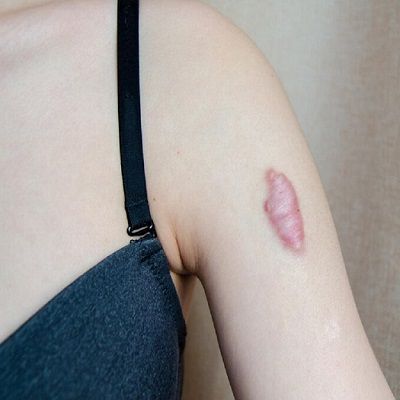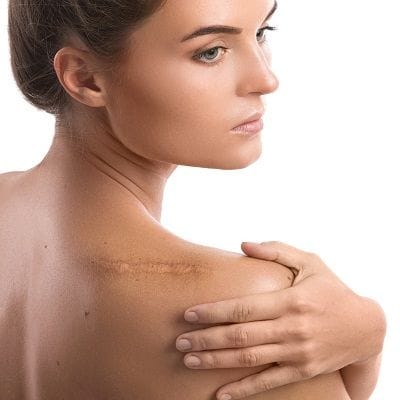
What Is A Keloid Scar?
After an injury heals, a keloid scar is a raised scar that can appear anywhere on the skin. Earlobes, shoulders, cheekbones, and chest are the most prevalent sites for these scars to appear. A person’s increased tendency to produce keloid scars might result in scarring in more than one skin location.
While a keloid scar is not directly damaging to your health, its unsightliness can cause severe emotional pain. The good news is that if you catch this scar early enough, you can get keloid treatment in Dubai to prevent or treat it.
Symptoms Of Keloid:
Various symptoms can be used to identify a keloid scar. Here’s a quick rundown of the most prevalent keloid symptoms.They may appear gradually at first. The initial signs of a keloid scar may appear 3-12 months after the source of the scar.
At first, a keloid scar is usually red, pink, or purple. The colour of a fully grown scar is often burgundy. And the scar’s appearance is determined by its location. A keloid on the earlobe, for example, will be thick and oval or circular. The scar on the legs, chest, or arms, on the other hand, is raised above the skin and has a flat surface.
The majority of keloids grow slowly. Their speed, however, may differ. Some take weeks or months to grow, while others take years. Only a few keloid scars mature quickly. The rapidly expanding keloids have grown to three times their initial size in just a few months.
As a keloid scar form, it can be itchy or uncomfortable. These symptoms will last until the scar tissue stops growing. Most keloid scars do not shift and remain in the same place. When the keloid scars on the ear, neck, or abdomen are touched, they only move slightly. A fully grown keloid scar is often darker than the surrounding skin. It also has darker borders than the centre.
Keloid Scars: What Causes Them?
Although the specific cause of keloid scar formation is uncertain, most specialists think it is caused by a malfunctioning wound-healing mechanism following an injury. Collagen is produced in excess as a result of this malfunction. Collagen is a protein that aids in the healing of wounds. A keloid is formed when collagen overgrowth causes substantial scar tissue to form in an injured site.
A skin injury caused by acne, body piercing, an injection, an insect bite, burns, or even a little scratch is usually the primary trigger for keloid formation.
Factors At Risk:
Experts have recognised some risk factors for keloid scars removal methods. These are some of the factors:
Having Black Or Brown Skin:
Although the explanation is unknown, those with a brown or black complexion are more likely to develop keloid scars.
Keloid Scars On Your Body Or In Your Family:
Overall, predisposition to forming keloid scars appears to run in families, implying that genetics may play a role in scar formation. Furthermore, if you have already had a keloid scar, you may be at risk of having more.
Being Under The Age Of 30:
Individuals between the ages of 20 and 30 are more susceptible to getting keloid scars than those of other ages.
Treatment Options For Keloids:
Keloid scars can be treated in a variety of ways. Depending on the degree and location of the scar, your doctor will recommend a keloid treatment in Dubai. They may combine multiple treatments to design a treatment plan based on your needs.
The following methods can be used to treat keloid scars.
Injections Of Corticosteroid Or Steroid:
A corticosteroid solution may be injected into the keloid scar by your dermatologist. This steroidal solution weakens the link between collagen fibres, resulting in a smaller keloid—anti-inflammatory characteristics in this solution aid in avoiding redness, swelling, discomfort, and itching.
Depending on the severity of the keloid scar and other considerations, corticosteroids can be used alone or in combination with surgery to treat keloid scars.
Laser Therapy:
Based on the underlying cause, your dermatologist may recommend laser therapy to repair keloid scars. This treatment aids in the reduction of scar projection and the restoration of skin colour. Other therapies, such as corticosteroids, bandages, and specific dressings, may be used in conjunction with this treatment.
Surgery:
Surgery can be used to treat more severe keloid scars. However, there is a substantial chance of keloid recurrence in the exact location. To prevent another keloid scar from forming, your dermatologist may combine surgical excision of the keloid with corticosteroid treatment or steroid injections.
Results:
The goal of all keloid treatments in Dubai aims to reduce the size of keloid scars while also alleviating symptoms like itching and pain. The treatment approach will determine other elements such as post-treatment expectations and the number of sessions required.
What Is The Cost Of Getting A Keloid Scar Removed?
The price of eliminating a keloid scar is mainly determined by the treatment method used and the number of sessions required. At Dynamic Clinic Dubai, you can get a price estimate during your initial appointment.
Request An Appointment!
The goal of the first appointment is to provide you with a general understanding of your individualised keloid treatment strategy. You will also be told what to expect after the procedure.

